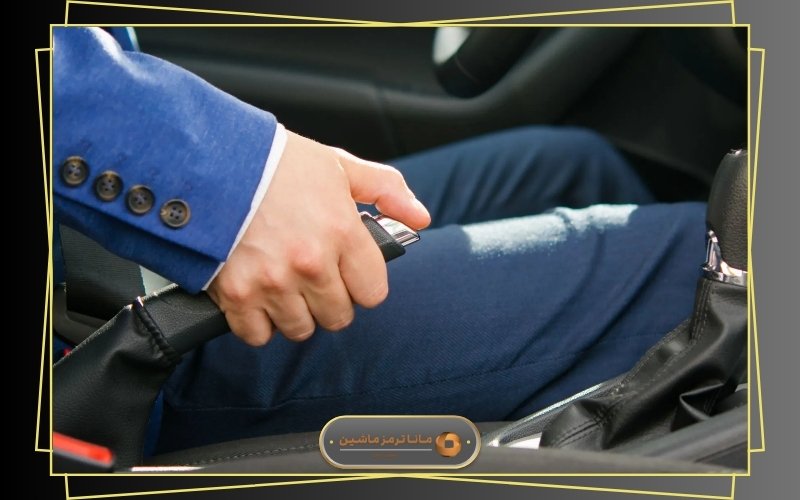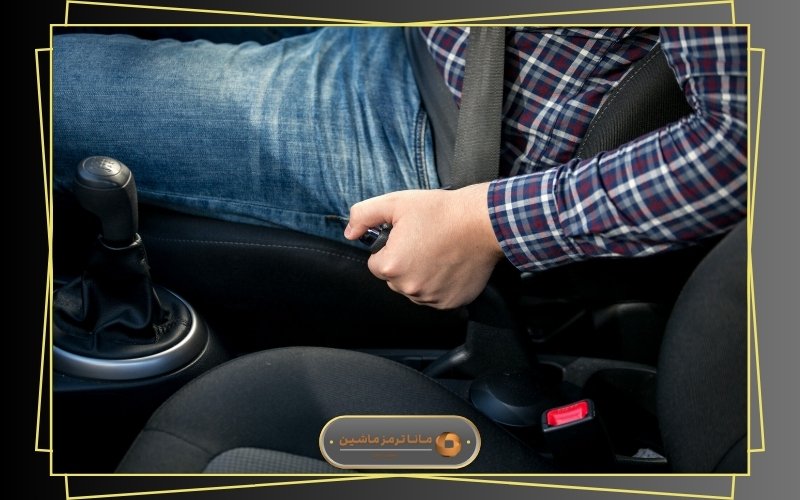Proper Pressure Adjustment When Engaging the Handbrake
One of the most common mistakes drivers make is pulling the handbrake too hard. Applying excessive force can damage the handbrake cables and internal mechanisms, leading to potential failure. The handbrake should only be pulled enough to hold the vehicle stationary—no more.
In newer vehicles equipped with electronic parking brake systems, the appropriate force is automatically applied. However, in older vehicles with mechanical handbrakes, it is essential to pay attention to how firmly the brake is engaged. Pulling it just enough to keep the car stable is sufficient.
Avoid Using the Handbrake While Driving
The handbrake is designed to be used only when the vehicle is fully stopped. Engaging it while driving can quickly damage the braking system and brake discs. Furthermore, applying excessive pressure during motion may accelerate brake pad wear and even lead to a loss of vehicle control.
Therefore, use the handbrake only when the vehicle is completely stationary. In emergency situations, always rely on the main braking system to slow down or stop the car.
Special Conditions for Handbrake Use
The handbrake is especially useful in specific scenarios, such as parking on steep inclines or when leaving a vehicle parked for an extended period. On level surfaces, its use is less critical, and minimizing its use can reduce strain on the system.
During cold seasons, particularly when temperatures fall below freezing, components of the handbrake may freeze. In such cases, it’s better to rely on the gear (for manual transmissions) or the park mode (for automatics) to keep the vehicle from moving, thereby preventing unnecessary stress on the handbrake system.
The Importance of Regular Handbrake Maintenance
Just like any other part of the vehicle, the handbrake requires regular servicing and maintenance. Over time, cables and mechanical components may wear out or become dry, which can interfere with the proper function of the handbrake. Additionally, dust and moisture can damage the system and compromise its performance.
To prevent potential failures, the handbrake and related components should be inspected routinely. If you notice symptoms such as difficulty in pulling the brake, unusual noises, or looseness, it’s important to visit a mechanic immediately. Ignoring these signs could lead to more serious issues.
Combining the Handbrake with Gear Engagement
One effective method to reduce pressure on the handbrake is using the vehicle’s gear when parking. In manual transmission cars, it’s best to place the car in first gear or reverse when parking on a slope, then apply the handbrake. This reduces the load on the braking system.
In automatic vehicles, using the “Park” (P) mode can relieve stress from the handbrake. Combining gear engagement with the handbrake helps extend the lifespan of the system and improves its effectiveness.
Conclusion
Proper use of the handbrake not only contributes to better vehicle performance but also helps prevent serious damage to the brake system, cables, and other components. By following best practices—such as applying the correct pressure, avoiding improper use while driving, conducting regular maintenance, and combining gear engagement with the handbrake—you can extend the life of the system and avoid costly repairs.
In the end, correct handbrake usage not only protects your vehicle but also enhances safety for you and everyone else on the road.


